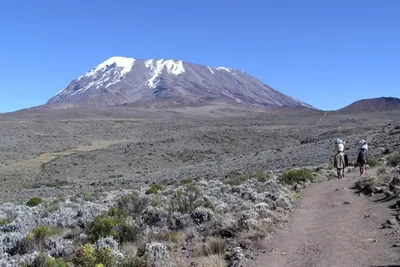Essential Medications and Tips for Preventing Altitude Sickness on Kilimanjaro
Acclimatization is one of the most crucial aspects of summiting Mount Kilimanjaro safely. While climbing at high altitudes presents a unique set of challenges, proper acclimatization and the right medications can minimize the risk of altitude sickness. This guide outlines the medications and tips that help you stay healthy and reach the summit with confidence.

Understanding Altitude Sickness on Kilimanjaro
Altitude sickness occurs when you climb too high too quickly, and your body struggles to adjust to the lower levels of oxygen available at high altitudes. The higher you go, the thinner the air becomes, and this can cause symptoms such as headaches, dizziness, nausea, and shortness of breath. For climbers on Mount Kilimanjaro, this is an important factor to manage, especially as you ascend to the summit.
How Acclimatization Helps
Acclimatization is the process of your body gradually adjusting to the altitude. To avoid altitude sickness, it’s recommended to ascend slowly, allowing your body to adapt to the changes in air pressure and oxygen levels. Trekking routes like the Lemosho and Machame allow for a slower pace and better acclimatization due to their longer durations.
Essential Medications for Altitude Sickness
Several medications can help prevent or treat altitude sickness. It is important to consult with your doctor before taking any of the following:
- Diamox (Acetazolamide): Diamox is the most common medication prescribed to help prevent altitude sickness. It speeds up the acclimatization process by helping your body adjust to lower oxygen levels. It is usually taken a day before ascending and continued for a few days during the trek.
- Ibuprofen or Paracetamol: These over-the-counter medications can help relieve headaches, a common symptom of altitude sickness.
- Antiemetics: Medications like Ondansetron can help reduce nausea caused by high altitudes, which is helpful for climbers who experience stomach discomfort.
- Dexamethasone: In severe cases of altitude sickness, this steroid can be used to treat symptoms of high-altitude cerebral edema (HACE), a life-threatening condition caused by swelling of the brain.
- Oxygen: If symptoms of altitude sickness become severe, supplemental oxygen can be used to aid recovery.
When to Take Medications
It’s important to start taking Diamox 24 to 48 hours before your ascent to allow your body time to adjust. Continue taking the medication while ascending. For other medications like Ibuprofen or Antiemetics, they can be used as needed based on symptoms. Always follow your doctor’s guidance and recommendations for dosages and duration.
Stay Hydrated and Well-Fed
Along with medication, maintaining good hydration and nutrition is key for preventing altitude sickness. Dehydration can make symptoms worse, so it’s important to drink plenty of water and eat nutrient-rich foods. Your trekking crew will provide meals that are designed to support high-altitude trekking, and you should also bring snacks like energy bars and nuts to keep your energy up.
Climbing With Support
When it comes to preventing altitude sickness, one of the most beneficial steps is trekking with a trusted guide and support team. They will monitor your progress, keep track of your health, and ensure that you are taking the necessary breaks and hydrating. With expert advice and support, the risk of altitude sickness is significantly reduced.
Importance of Rest Days
Including rest days in your itinerary allows your body time to acclimatize. On Kilimanjaro, this is often built into the route, with scheduled days to rest at specific altitudes. These days are essential for your body to adjust to the changing air pressure before ascending further.
Booking with Jaynevy Tours
At Jaynevy Tours, we ensure that all climbers are well-prepared for their Kilimanjaro trek. Our guides are highly trained in altitude sickness prevention and acclimatization techniques. We provide professional guidance and customized itineraries to give you the best chance of success on your climb.
For more information or to book your Kilimanjaro trek, reach out to us at: jaynevytours@gmail.com
Frequently Asked Questions
What are the early signs of altitude sickness?
Early symptoms include headache, nausea, dizziness, loss of appetite, and trouble sleeping. These symptoms can often be treated by stopping the ascent and resting, but if symptoms worsen, it is important to descend immediately.
Can Diamox be used to treat altitude sickness?
Diamox is primarily used to prevent altitude sickness but can also help alleviate some of the symptoms. It is not a cure, and climbers who experience severe symptoms should descend to a lower altitude.
Do I need a prescription for Diamox?
Yes, Diamox is a prescription medication. Be sure to consult with your doctor well in advance of your climb to get the appropriate prescription.
Can oxygen be used during the climb?
Oxygen is typically reserved for emergencies when symptoms of altitude sickness become severe. While supplemental oxygen can help, it is not a substitute for proper acclimatization.
What should I do if I feel symptoms of altitude sickness?
If you start to experience symptoms, inform your guide immediately. They will take the necessary steps, such as monitoring your condition, providing medication, and arranging for a descent if required.
BOOKING FORM
Book your tour here
RELATED PACKAGES
- Baraka Aquarium and Nungwi Village in Zanzibar
- Diving Tour in Zanzibar
- Zanzibar Sky Diving Tour
- Dolphin Snorkeling Sandbank Tour in Zanzibar
- Horse Riding Tour in Zanzibar
- Jet Ski Tour in Zanzibar
- Jozani Forest Visiting in Zanzibar
- Quad Bike Tour in Zanzibar
- Traditional Sunset Dhow Cruise Tour in Zanzibar
- The Best Stone Town Tour in Zanzibar
- Zanzibar Butterfly Tour
MORE PACKAGES
- Mount Kilimanjaro
- Ngorongoro Crater
- Serengeti National Park
- Tarangire National Park
- Lake Manyara National Park
- Zanzibar Island
- East Africa Packages
- Tanzania Safari From Zanzibar
- Kenya packages
- Rwanda Packages
- Uganda packages
- Mikumi National Park
- Kitulo National park
- Mkomazi National park
- Selous (Nyerere National Park)
